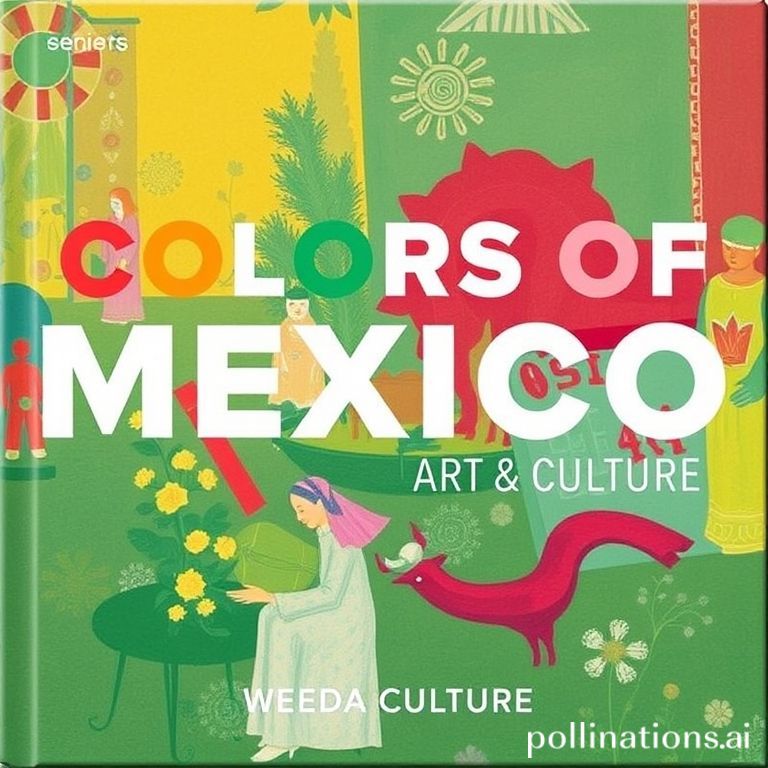Mexico, a land brimming with vibrant culture and rich history, is renowned for its captivating use of color. From the dazzling facades of colonial buildings to the intricate designs of traditional textiles, color plays a pivotal role in shaping the Mexican identity. But nowhere is this more evident than in Mexican art, where hues explode with meaning, emotion, and cultural significance.
The role of colors in Mexican art extends far beyond mere aesthetics. It’s a language, a storyteller, and a powerful medium for expressing the country’s complex narrative. By understanding the symbolism and significance of these colors, we can gain a deeper appreciation for the artistic masterpieces that have emerged from this captivating nation.
Pre-Hispanic Roots of Color Symbolism
The use of color in Mexican art is deeply rooted in pre-Hispanic cultures, such as the Aztec and Mayan civilizations. These ancient societies attributed profound symbolic meanings to different colors, reflecting their understanding of the cosmos, nature, and human existence. These traditions heavily influenced later artistic expressions.
Common Pre-Hispanic Color Symbolism
- Red: Represented blood, life, power, and sacrifice. Often used in rituals and to depict warriors.
- Blue/Green: Signified water, fertility, vegetation, and the god Quetzalcoatl. Associated with life and abundance.
- Yellow: Symbolized the sun, maize (corn), and nourishment. Represented life-giving energy and prosperity.
- Black: Represented death, night, and the underworld. Also associated with obsidian and the unknown.
These colors weren’t simply decorative; they were integral to conveying religious beliefs, historical events, and social structures within these ancient societies. Artists carefully selected and combined colors to communicate specific messages to their audience.
Color in Colonial and Folk Art
With the arrival of the Spanish in the 16th century, Mexican art underwent a significant transformation. European artistic styles and techniques were introduced, blending with indigenous traditions to create a unique syncretic art form. Despite the influence of European aesthetics, the use of vibrant colors remained a defining characteristic of Mexican art.
Folk Art’s Enduring Palette
Mexican folk art, in particular, showcases a remarkable array of colors. From the brightly painted alebrijes (fantastical creatures) to the intricately embroidered textiles, folk artists embrace bold and saturated hues to express their creativity and cultural heritage. These colors often reflect the natural surroundings of the artists, incorporating the vibrant flora and fauna of their regions.
The tradition of using cochineal, a natural dye derived from insects, to produce rich reds and purples has been a significant part of Mexican textile art for centuries. Similarly, indigo, extracted from plants, has been used to create deep blues. These natural dyes contribute to the unique and vibrant color palettes found in Mexican folk art.
Modern Mexican Art and Color
In the 20th century, Mexican art experienced a resurgence of national pride and cultural identity. Artists like Diego Rivera, Frida Kahlo, and David Alfaro Siqueiros embraced bold colors to depict social and political themes, as well as to celebrate Mexican heritage. Their murals and paintings are iconic examples of how color can be used to convey powerful messages and emotions.
Frida Kahlo’s Emotional Palette
Frida Kahlo, arguably Mexico’s most famous artist, utilized color to express her personal experiences and emotional turmoil. Her self-portraits are filled with symbolic imagery and vibrant colors that reflect her pain, resilience, and passion. The use of red, in particular, is prominent in her work, representing both her physical suffering and her life force.
Other modern Mexican artists, such as Rufino Tamayo and José Luis Cuevas, also experimented with color in innovative ways, pushing the boundaries of artistic expression and contributing to the diverse landscape of Mexican art. The legacy of these artists continues to inspire contemporary artists in Mexico and around the world.
Conclusion
The role of colors in Mexican art is a fascinating and complex subject that reflects the country’s rich history, diverse cultures, and vibrant spirit. From the ancient symbolism of pre-Hispanic civilizations to the bold expressions of modern artists, color has always been an integral part of the Mexican artistic identity. By understanding the significance of these colors, we can gain a deeper appreciation for the beauty and power of Mexican art.
If you enjoyed this article, don’t forget to explore more inspiring stories on Life in Mexico!
IMAGE: A vibrant and colorful mural in Oaxaca, Mexico. The mural depicts scenes of daily life, indigenous culture, and Mexican history. The colors are bright and saturated, creating a festive and energetic atmosphere. The style is reminiscent of Mexican folk art, with bold lines and stylized figures. The lighting is bright and sunny, highlighting the vibrancy of the colors.


